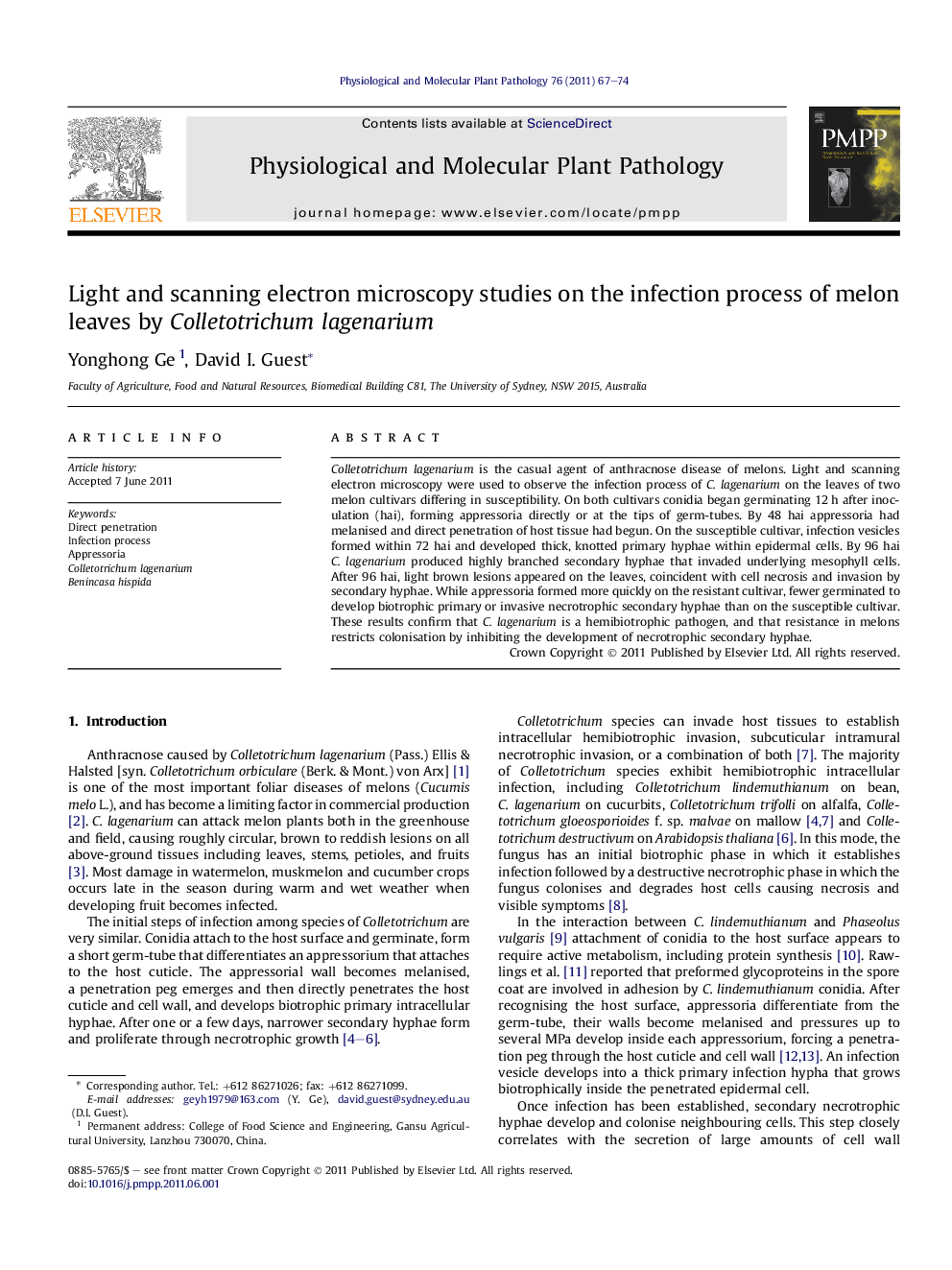| Article ID | Journal | Published Year | Pages | File Type |
|---|---|---|---|---|
| 2836487 | Physiological and Molecular Plant Pathology | 2011 | 8 Pages |
Colletotrichum lagenarium is the casual agent of anthracnose disease of melons. Light and scanning electron microscopy were used to observe the infection process of C. lagenarium on the leaves of two melon cultivars differing in susceptibility. On both cultivars conidia began germinating 12 h after inoculation (hai), forming appressoria directly or at the tips of germ-tubes. By 48 hai appressoria had melanised and direct penetration of host tissue had begun. On the susceptible cultivar, infection vesicles formed within 72 hai and developed thick, knotted primary hyphae within epidermal cells. By 96 hai C. lagenarium produced highly branched secondary hyphae that invaded underlying mesophyll cells. After 96 hai, light brown lesions appeared on the leaves, coincident with cell necrosis and invasion by secondary hyphae. While appressoria formed more quickly on the resistant cultivar, fewer germinated to develop biotrophic primary or invasive necrotrophic secondary hyphae than on the susceptible cultivar. These results confirm that C. lagenarium is a hemibiotrophic pathogen, and that resistance in melons restricts colonisation by inhibiting the development of necrotrophic secondary hyphae.
► Colonisation of melon by Colletotrichum lagenarium is hemibiotrophic. ► Early stages of infection are similar in a resistant and susceptible cultivar. ► Resistance is due to restriction of necrotrophic colonisation.
